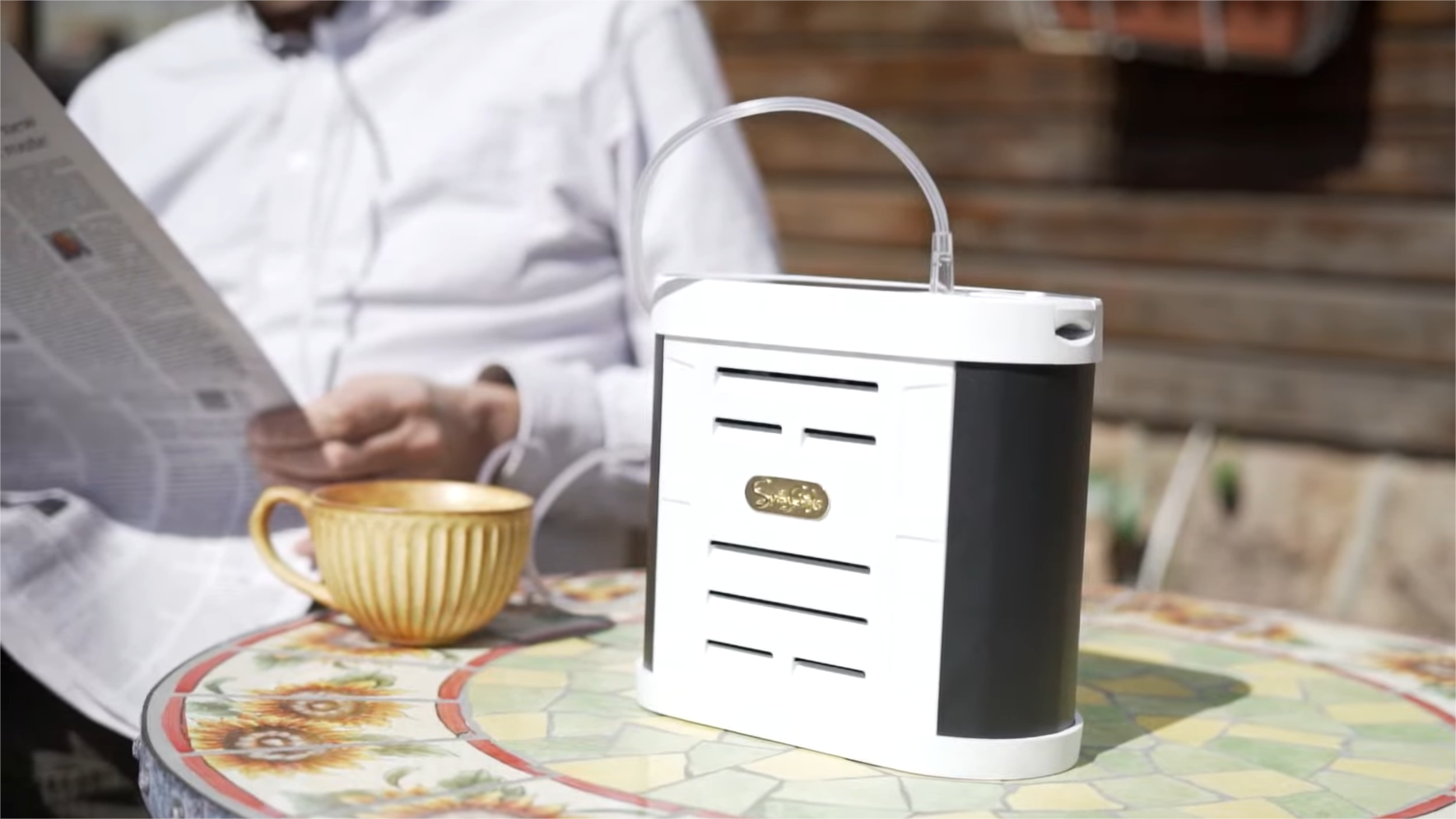If you rely on oxygen therapy, it's important to understand terms like "pulse flow." This term refers to a feature in some oxygen concentrators that delivers oxygen based on your breathing pattern. In this article, we'll break down what pulse flow means, explain how it works, and discuss its benefits. We'll also clear up any common misconceptions and guide you on how healthcare providers determine if pulse flow is right for you. Our goal is to make everything about pulse flow clear and understandable, helping you to better manage your respiratory needs and improve your quality of life.
Pulse Flow Explained
Pulse flow works by matching oxygen delivery to your breathing pattern – you inhale, and the machine sends a burst of oxygen your way. This approach is especially efficient. It means the concentrator isn't wasting oxygen when you're not taking a breath in. For you, this translates to a lighter, more compact unit that's easier to carry around, and you won't be as tied down by the need to recharge or replace batteries.
These concentrators are all about giving you what you need without extra fuss or waste. While pulse flow might not be perfect for everyone, talking to your doctor can help you figure out if it fits into your life and supports your health needs.
The Real-World Benefits of Pulse Flow
With pulse flow oxygen concentrators, the perks go beyond just technical efficiency. This feature can significantly improve day-to-day life for those who need supplemental oxygen. Because these devices only provide oxygen as you breathe in, they use less energy, which means one huge thing for users: more time untethered from power supplies. Your device lasts longer on a single charge, giving you the freedom to run errands or meet friends without worrying about your next battery charge.
The design also tends to be leaner and lighter. Carrying around a heavy piece of equipment can be draining and daunting, but with pulse flow machines, that extra weight is lifted – literally. It's like swapping out a heavy suitcase for a light backpack on a day out.

On top of the practical benefits, pulse flow can also be gentler on your body. Since the oxygen output is precisely timed, it can feel more comfortable and natural than a constant, unchanging stream of air, especially for those sensitive to higher flows of oxygen.
But it's not all about comfort and convenience. For the right candidates, pulse flow can be just as effective in meeting their oxygen needs as traditional continuous flow systems. It's essential to have a candid conversation with your healthcare provider to confirm that pulse flow aligns well with your respiratory requirements.
Who Can Benefit from Pulse Flow Oxygen?
Active and On-the-Go Users
For those who are always on the move, pulse flow oxygen concentrators can be a breath of fresh air. If your daily routine includes regular physical activity or just a lot of errands, these devices are engineered to keep up with you, mirroring your natural breathing rhythm with each step you take.

Patients with Consistent Breathing Patterns
Patients who have stable and consistent breathing patterns stand to benefit greatly from pulse flow technology. The device's sensors are adept at detecting regular inhales, providing oxygen efficiently with each breath. This makes pulse flow an excellent option for those who maintain a steady respiratory rate during both rest and mild activities.
Individuals Seeking Greater Comfort
Pulse flow can also be a boon for those seeking a more comfortable and less intrusive oxygen delivery method. Since oxygen is delivered in pulses rather than a continuous stream, it can feel lighter and less forceful, which is often preferable for people who might be sensitive to the constant flow of oxygen.
Users Looking for Efficiency
Efficiency seekers will appreciate how pulse flow maximizes battery life. If you're someone who's conscious about energy use and frequent recharging, the efficiency of pulse flow devices ensures that your oxygen therapy doesn't tie you down with constant power needs.
Making the Most of Your Pulse Flow Concentrator
Once you and your healthcare provider decide that a pulse flow oxygen concentrator is right for you, there are some tips and tricks to help you get the most out of your device. These practical pointers can make using your concentrator more effective and fit smoothly into your daily life.
Getting Comfortable with the Settings
Your concentrator will come with various settings that control how much oxygen is delivered with each pulse. Take the time to learn what each setting means and how it affects your oxygen delivery. This knowledge will empower you to adjust the device according to your activity level – whether you're resting, taking a brisk walk, or doing household chores.
Recognizing Your Oxygen Needs
It's important to become attuned to your body's signals. If you start feeling short of breath or notice signs that you're not getting enough oxygen, don't hesitate to check if your concentrator is functioning properly and set to the correct level of oxygen delivery.
Daily Use and Routine
Incorporate your pulse flow concentrator into your daily routine so that it becomes second nature. Have a dedicated spot for charging it when not in use, and consider carrying spare batteries if your model allows for battery swapping. Also, routinely clean and maintain your device according to the manufacturer's instructions to ensure it continues to work effectively.
Traveling with Ease
If you love to travel, pulse flow concentrators can be your best companion. They are usually FAA-approved for air travel and are easy to carry around. Always plan ahead by checking your concentrator's battery life and knowing where you can access power for recharging during longer trips.

Clearing Up Misconceptions about Pulse Flow
When it comes to pulse flow oxygen therapy, there's a fair amount of myth-busting to do. Let's set the record straight on a few common misunderstandings and provide you with the clear, no-nonsense facts.
"Pulse Flow Isn't as Effective"
Some may worry that because pulse flow doesn't deliver oxygen continuously, it's not as effective. However, for those whose breathing patterns are well-suited to pulse flow, this method can be just as effective at maintaining proper oxygen levels in the blood as continuous flow – all while being more energy-efficient.
"It's Too Complicated to Use"
While any new technology can seem daunting at first, pulse flow concentrators are designed with user-friendliness in mind. Once you've learned the settings and how to adjust them to your needs, using a pulse flow device can become as routine as using a mobile phone or TV remote.
"Pulse Flow Only Works for Light Activity"
Actually, many pulse flow devices are equipped with different settings to cater to various activity levels. Whether you're sitting down with a book or out for a walk, the device can adjust its oxygen delivery to suit your pace.
Final Thoughts
Pulse flow devices are energy-savers and their lighter, portable design makes it easier for users to stay active without constant recharging worries. The focus of pulse flow is personalization; the technology works best when tailored to your specific breathing pattern and lifestyle needs, requiring regular collaboration with your healthcare provider. Understanding how your device works and maintaining it properly will help you make the most of its benefits. Lastly, don't be deterred by misconceptions about pulse flow – with the right usage and guidance, it can be a great asset to managing your respiratory needs, improving your quality of life with each breath.




Commenta
Questo sito è protetto da hCaptcha e applica le Norme sulla privacy e i Termini di servizio di hCaptcha.